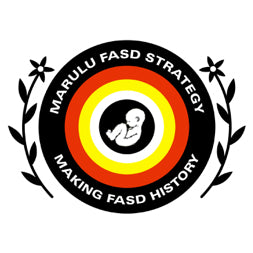Our Country

The terrain surrounding Fitzroy Crossing is dissected by red and black crevassed limestone ranges. These are the remnants of an ancient Devonian reef system. Geiki Gorge, known to the Bunuba as Darnkgu, holds the mighty Fitzroy River, which swells and floods the land during the Wet season.
History
Marninwarntikura began with a women’s group in 1991. The organisation’s founding women were very strong. They had the courage to say that domestic and family violence was happening. Many at the time did not want to admit to it, or they were too afraid to say that it was taking place. The women who first called this place ‘Marninwarntikura’ fought for the rights of other women who were struggling. Marninwarntikura was built to bring women together so they could support each other to feel safe and to find their voices.
In the mid 1980s these women came together. They had experienced the horror of domestic and family violence and felt the destructive effects of excessive alcohol consumption. The women were determined through their voices to shape a healthier society around wellbeing and care. - June Oscar, Former CEO
The vision of the women who established the Women’s Group all those years ago continues to inspire the current Board and staff of Marninwarntikura.
The birth of Fitzroy Crossing
Fitzroy Crossing emerged from the collision of two worlds. In the closing tumultuous decades of the nineteenth century European pastoral settlers drove their way north. As they mapped out territories for large homesteads and expansive cattle pastures they imposed European traditions and cultural values into the fertile freshwater country of the Bunuba, Gooniyandi and Ngarinyin. It was a time of great upheaval, conflict and bloodshed. Resistance figures, such as Jandamarra (a powerful Bunuba man) fought against the invasion of their ancestral homelands. The way Aboriginal people responded to European occupation was complex and dynamic.
The Walmajarri, Wangkajunga and Gooniyandi came together on Bunuba country. Once again the Indigenous people of the Fitzroy Valley forged a new existence. They negotiated a previously unknown cultural, spiritual and geographical terrain. Through respect for each other’s country, an appreciation of cultural differences and similarities, and responsibility for one another, the four language groups built communities around the small townsite of Fitzroy Crossing.
The 40 communities surrounding the Fitzroy Valley are made up of a population of approximately 3,500. The community has changed from a society servicing the pastoral industry, to today’s community, structured around government and other organisations delivery of services.
In recent times the people of Fitzroy Crossing have faced great changes, but have always found ways to bring their cultural and spiritual identities together. In sharing their stories, speaking their languages and practicing their law and ceremonies, they have formed new protocols to govern their communities and define their co-existence. We know our dynamic community has a long history of responding to change, we understand context and history influences the present and that addressing the challenges of intergenerational trauma is core to creating the kind of society we are working towards at Marninwarntikura.
Country
Marninwarntikura is situated on Bunuba country in a small town called Fitzroy Crossing. The Fitzroy Valley is a collection of connected communities covering an area of the central southern Kimberley of Western Australia – a part of the world known for its diverse and beautiful physical environment and rich Indigenous cultures.

Aboriginal languages of the Fitzroy Valley



